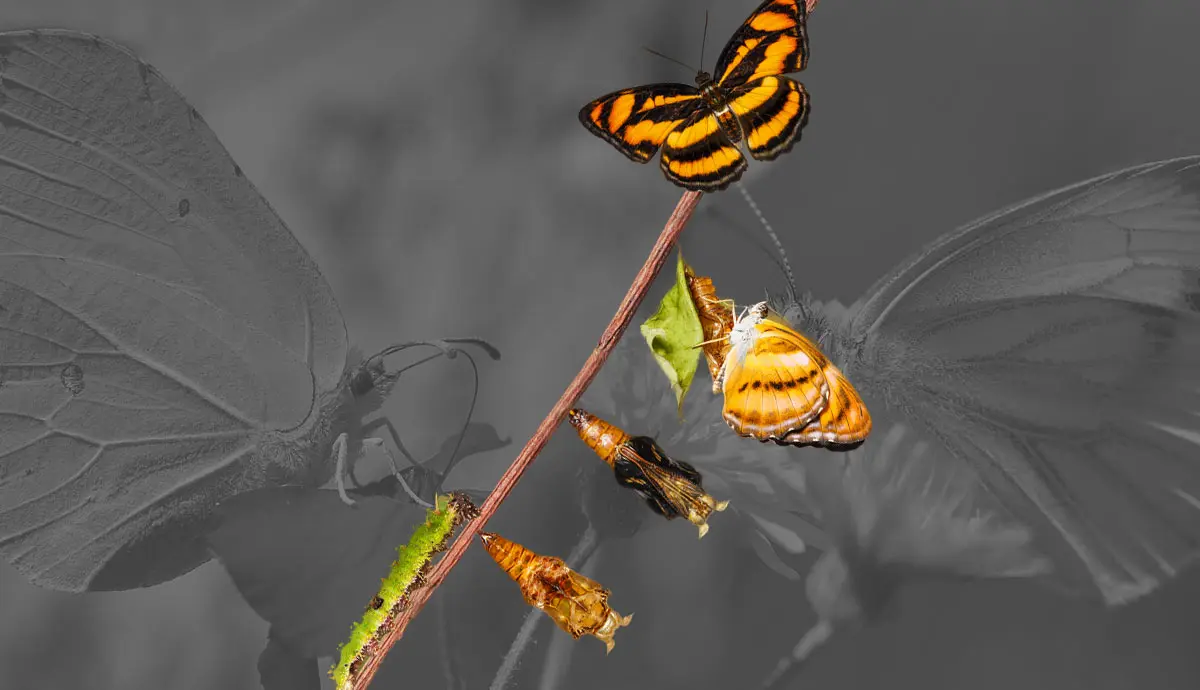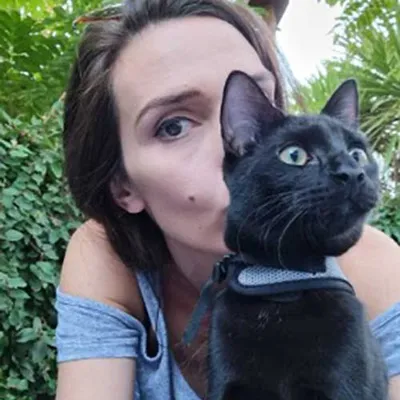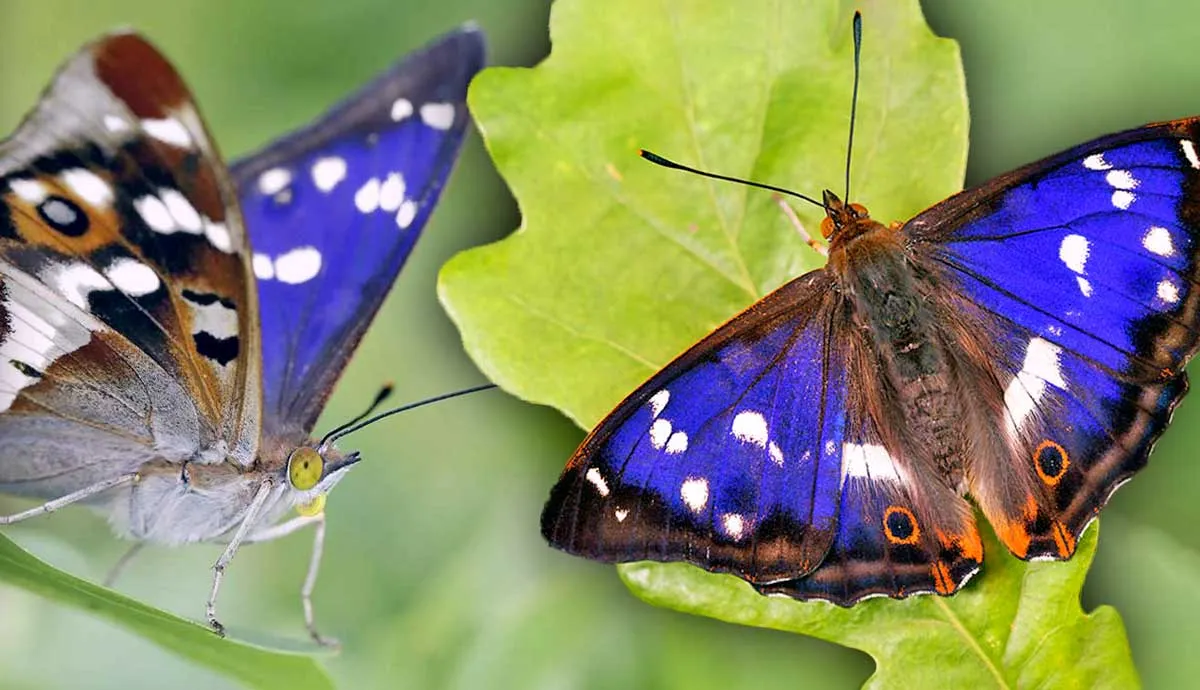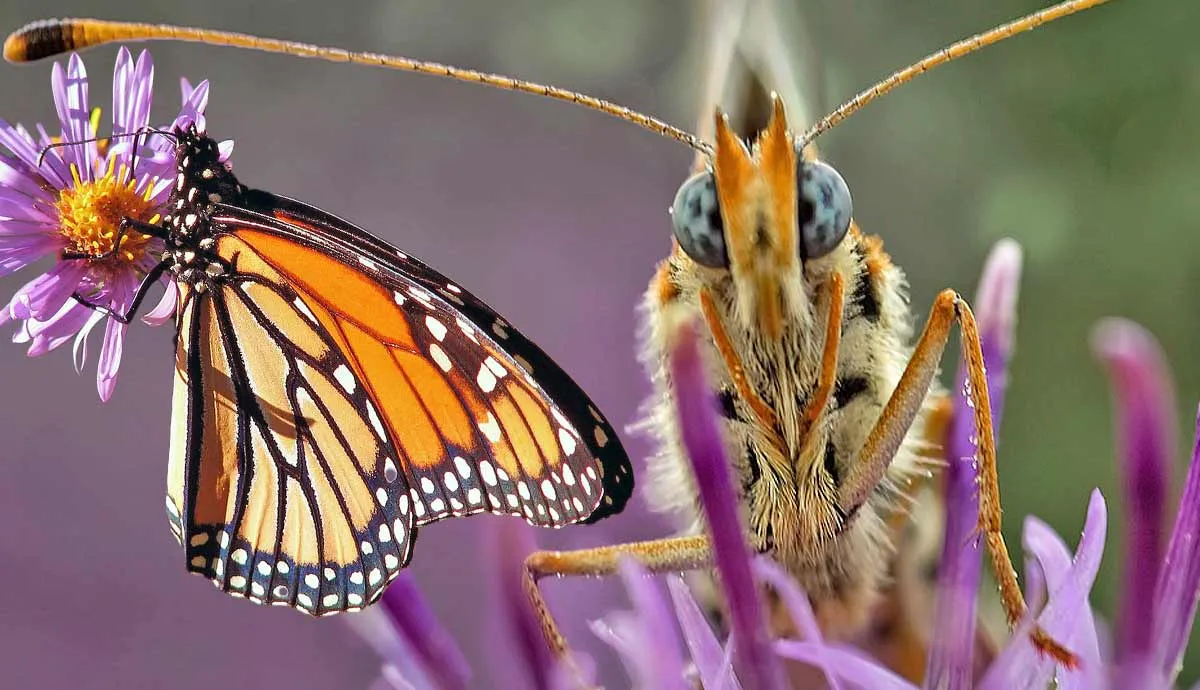Butterflies are one of the most beautiful insects in the world; the striking colors and patterns are guaranteed to brighten up any garden. Sadly, though, they have one of the shortest lifespans of any animal in the world, with species such as the Coppers and Small Blues butterflies living for just a few days.
Many factors contribute to this short lifespan. Firstly, the "butterfly" is just one stage of this metamorphosing insect's life. Additionally, genetic makeup and human activity contribute to a shorter lifespan. Discover why butterflies are so short-lived and how you can help to protect them.
What Is the Average Lifespan Of A Butterfly?
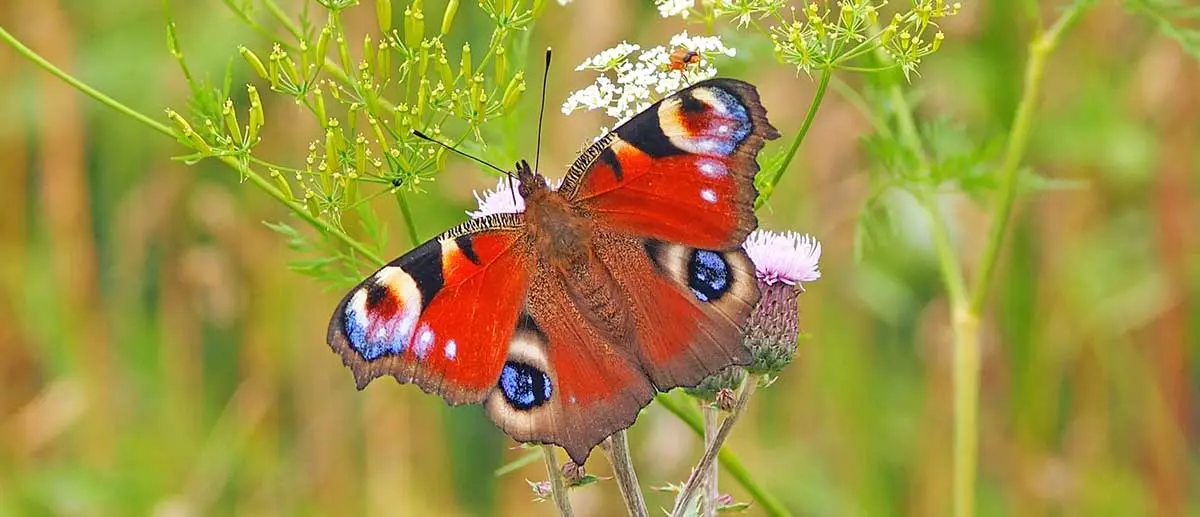
Most adult butterflies live for only 15-29 days in the wild. Some species can live for up to six weeks and migrating to tropical climates can extend their lifespan before returning home to mate. Scientists derive these calculations by marking butterflies and then recapturing or sighting those butterflies to form a complete picture of their lives.
Butterflies live longer in captivity because of the reduction in natural threats, but this doesn't necessarily paint an accurate picture of the lifespan of a butterfly. For example, wild butterflies face predators such as birds and large insects, as well as human-induced dangers like traffic. When butterflies are held in captivity, they no longer have predators to fear and don't have to adapt to temperature changes.
Of course, a "butterfly" is one stage of this incredible little insect's life. In total, their lives often add up to around two-three months:
- Egg: 4-10 days
- Caterpillar: 3-4 weeks
- Chrysalis: 10-20 days
- Adult: 15-29 days
What Affects the Lifespan Of A Butterfly?
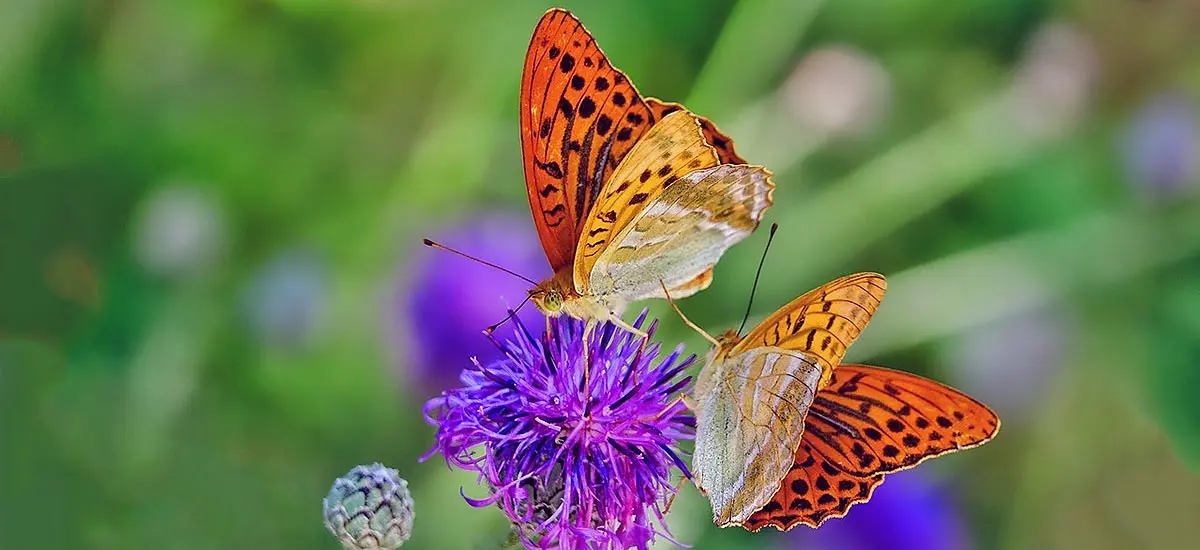
Several factors affect a butterfly's lifespan, including its size, species, and habitat.
The larger a butterfly, the longer its lifespan, but the characteristics and behaviors of certain species can increase their lifespan. For example, monarch butterflies migrate to warmer climates, which helps them to live for several months.
Additionally, butterflies are cold-blooded creatures, so the ambient temperature of their environment can affect how long they live. Butterflies who live in or migrate to tropical habitats live longer, thanks to the favorable conditions. Still, if a butterfly lays eggs in a cold climate, they will remain dormant and wait for warmer weather to arrive before they hatch.
However, if an egg is unfortunate enough to hatch too quickly, its lifespan will be reduced unless they migrate to a warmer climate.
Why Is the Lifespan of A Butterfly So Short?
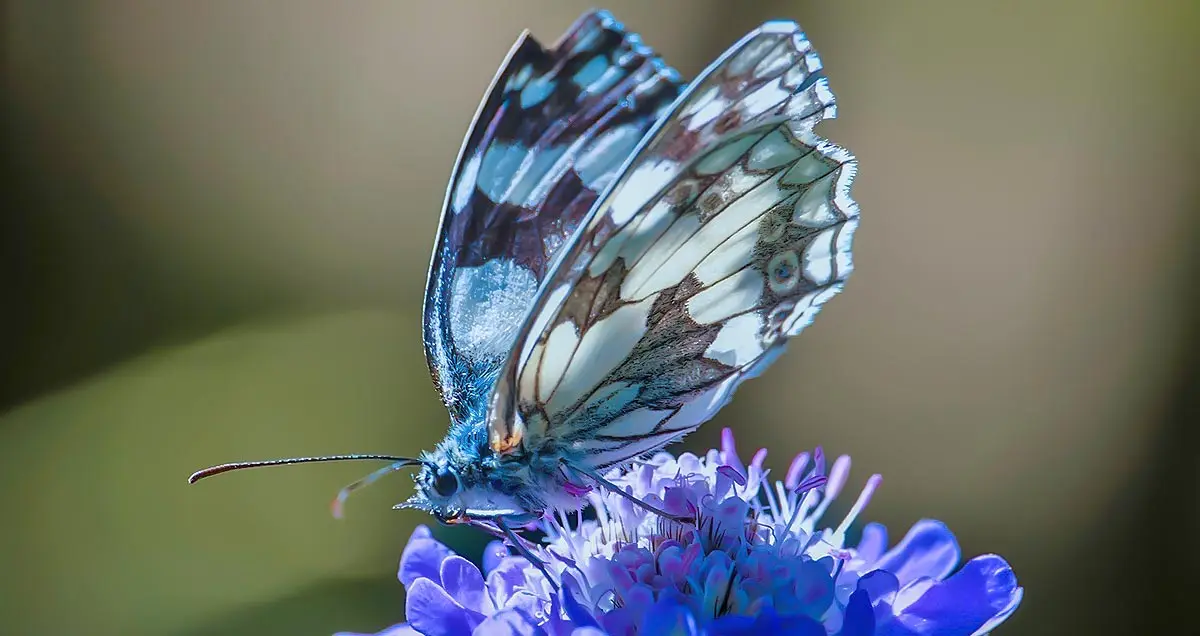
One reason why the lifespan of a butterfly is so short is that many are born without mouths, so they rely on the nutrients they ingest as a caterpillar to survive. Some butterflies can drink nectar using their proboscis - or tube-like tongue - as a straw.
In addition, butterflies don't sleep. At night, or when it's cold, butterflies enter a quiescent state where they rest by hanging upside down (often with their eyes open).
Becoming a butterfly is this beautiful bug's final stage of life and represents a time when mating and laying eggs become the sole priority. With a limited amount of time, mating must occur as soon as possible, but the mating rituals can last up to 12 hours. Much of this time is spent with the male dancing a complex set of moves to woo and impress his lady.
Which Butterfly Lives the Longest?

The Brimstone butterfly can live for up to 13 months, which is practically ancient for a butterfly. These striking yellow insects live across Europe, Asia, and North Africa and hibernate through the winter to help extend their lifespan.
Adult Brimstones are medium to large butterflies with a wingspan of up to 6 cm. Both genders have veiny, leaf-shaped wings but the females are a pale-yellow hue (that is almost white), while the male possesses a much bolder yellow coloration. These insects feed on nectar through their long proboscis, assessing food that is out of reach for many other butterfly species.
How Do Humans Affect the Lifespan of Butterflies?

Butterflies already have a short lifespan, but our activities can decrease this limited time even further. Firstly, our carbon emissions are slowly warming the planet, which disrupts a butterfly's relationship with its host plants. In addition, these environmental changes mean that some butterflies have to make longer migratory journeys, exposing them to more significant dangers.
Humans also kill butterflies indirectly through their use of pesticides and chemicals, which can lead to the destruction of natural habitats.
How Can We Protect the Lives of Butterflies?
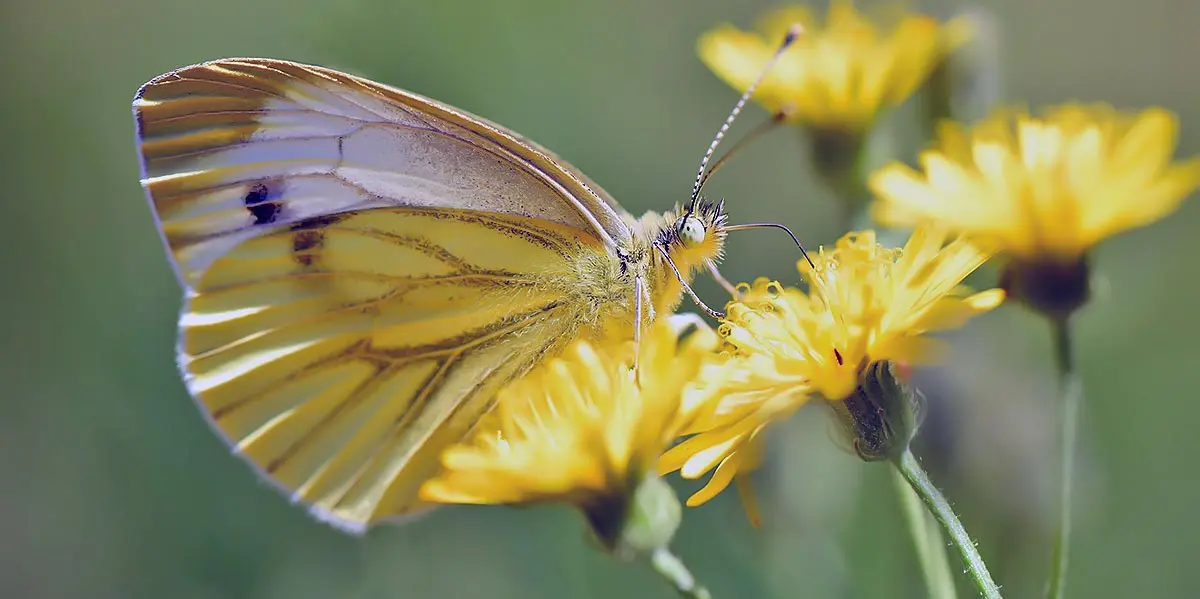
Butterflies are more than just a beautiful burst of color in your garden; they also carry out several important tasks. In their short lives, butterflies help to pollinate the plants in your garden by collecting pollen and transferring it to other plants, which helps flowers, fruits, and veggies to produce new seeds.
In addition, the presence of butterflies in your garden indicates a healthy environment that attracts native birds and bees. These creatures are essential for maintaining a healthy environment and increasing biodiversity. So how can we protect them?
Butterflies are extremely sensitive to climate and habitat changes, so providing the right environment for them is essential. Each caterpillar species eats a specific plant. While you might not want caterpillars munching through your entire garden, it's easy to plant grasses, sedges, or flowering plants in an area specifically designed for these little creatures. After all, if we don't nurture young caterpillars, we won't have any butterflies to admire.
Once they reach adulthood, butterflies are also fussy eaters, so including specific plants such as citrus, tea trees, banksia, daisies, and other nectar-producing plants is a great way to provide nutrition for these beautiful insects. And minimize the use of chemicals and pesticides in your garden, as they are lethal for several creatures (not just caterpillars and butterflies).
If you want to learn more about saving butterflies, you can find out how to create the perfect habitat for them in your back garden and learn more about their conservation through numerous online resources.
